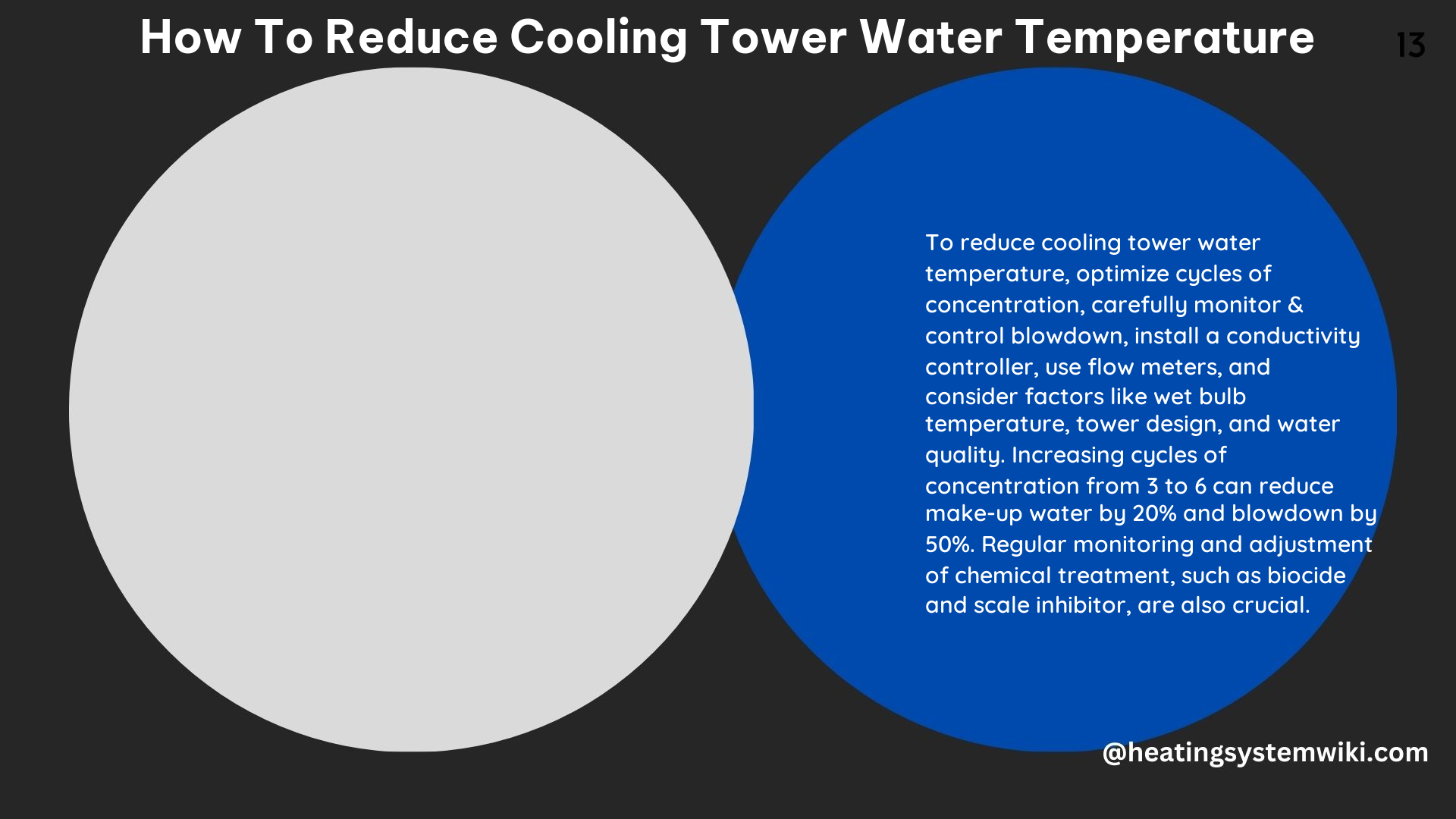Cooling towers are an essential component of many HVAC systems, responsible for dissipating heat and maintaining optimal operating temperatures. However, during the summer months, when ambient temperatures and humidity levels are high, the cooling tower water temperature can rise, leading to decreased efficiency and potential system damage. In this comprehensive guide, we’ll explore the steps you can take to effectively reduce cooling tower water temperature and ensure your system operates at peak performance.
Monitoring and Adjusting Cooling Tower Settings
The first step in reducing cooling tower water temperature is to closely monitor the temperature of the water. This can be done by installing a high-precision digital thermometer or temperature sensor at the cooling tower’s water outlet. By closely tracking the water temperature, you can make timely adjustments to the cooling tower’s settings to maintain optimal performance.
One of the most effective ways to lower the water temperature is to adjust the fan speed or water flow rate. Increasing the fan speed can enhance the evaporative cooling process, while adjusting the water flow rate can optimize the heat transfer efficiency. It’s important to find the right balance between these two parameters to achieve the desired water temperature without compromising the system’s overall efficiency.
Maintaining Proper Water Level

Keeping the water level within the recommended range is crucial for efficient cooling tower operation. If the water level is too low, the cooling capacity of the tower will be reduced, leading to higher water temperatures. Conversely, if the water level is too high, it can cause water to be carried over into the air stream, reducing the tower’s efficiency.
To maintain the proper water level, regularly check the level and top up the water as needed. It’s also important to ensure that the makeup water supply is functioning correctly and that any leaks in the system are promptly addressed.
Cleaning and Maintaining the Cooling Tower
Dirt, debris, and microbial growth can significantly impact the cooling tower’s performance, leading to reduced heat transfer efficiency and higher water temperatures. Regular cleaning and maintenance of the cooling tower are essential to mitigate these issues.
Implement a comprehensive cleaning schedule, which should include the following tasks:
– Removing any visible debris or buildup from the tower’s fill media, drift eliminators, and other components.
– Cleaning the tower’s basin and ensuring proper drainage.
– Inspecting and cleaning the water distribution system, including nozzles and piping.
– Disinfecting the tower to prevent the growth of harmful bacteria, such as Legionella.
By keeping the cooling tower clean and well-maintained, you can ensure optimal heat transfer and lower water temperatures.
Adjusting Chemical Treatment
The chemical composition of the cooling tower water can also affect its temperature. During the summer months, when water evaporation rates are higher, the concentration of dissolved solids and minerals in the water can increase, leading to scale formation and reduced heat transfer efficiency.
To address this issue, adjust the chemical treatment of the cooling tower water to ensure that it is appropriate for the summer conditions. This may involve increasing the dosage of scale inhibitors, biocides, or other water treatment chemicals to maintain the desired water quality and prevent scale buildup.
Installing a 3-Way Diverting Valve
In some cases, the cooling tower water temperature may be affected by ambient conditions, particularly during cold weather. To protect the system from freezing and maintain the desired water temperature, consider installing a 3-way diverting valve.
The 3-way diverting valve is installed in the cooling tower supply line and allows the user to set a minimum allowable temperature for the system. When the water temperature approaches the set minimum, the valve will automatically divert the water away from the cooling tower and directly back into the reservoir, preventing the system from freezing and maintaining the desired water temperature.
Selecting the Appropriate Cooling Tower Cell
The final consideration in reducing cooling tower water temperature is the selection of the cooling tower cell itself. The cooling tower’s performance is heavily influenced by the local climate, particularly the wet bulb temperature, which represents the lowest temperature that can be achieved through evaporative cooling.
When selecting a cooling tower cell, it’s essential to choose one that is designed to handle the highest wet bulb temperature in your geographical area. This ensures that the tower can effectively dissipate heat even during the hottest and most humid summer conditions.
For example, in Indianapolis, Indiana, the design wet bulb temperature is 78°F, and the city can expect less than one hour per year when the conditions exceed this threshold. By selecting a cooling tower cell that is rated for these conditions, you can be confident that the system will maintain optimal performance and water temperature throughout the summer.
Conclusion
Reducing cooling tower water temperature is a critical aspect of maintaining the efficiency and longevity of your HVAC system. By following the steps outlined in this comprehensive guide, including monitoring and adjusting cooling tower settings, maintaining proper water level, cleaning and maintaining the tower, adjusting chemical treatment, installing a 3-way diverting valve, and selecting the appropriate cooling tower cell, you can ensure that your cooling tower operates at peak performance, even during the hottest summer months.
Remember, regular maintenance and vigilance are key to keeping your cooling tower water temperature in check. By staying proactive and addressing any issues promptly, you can maximize the efficiency and reliability of your HVAC system, while also reducing energy costs and extending the lifespan of your equipment.
